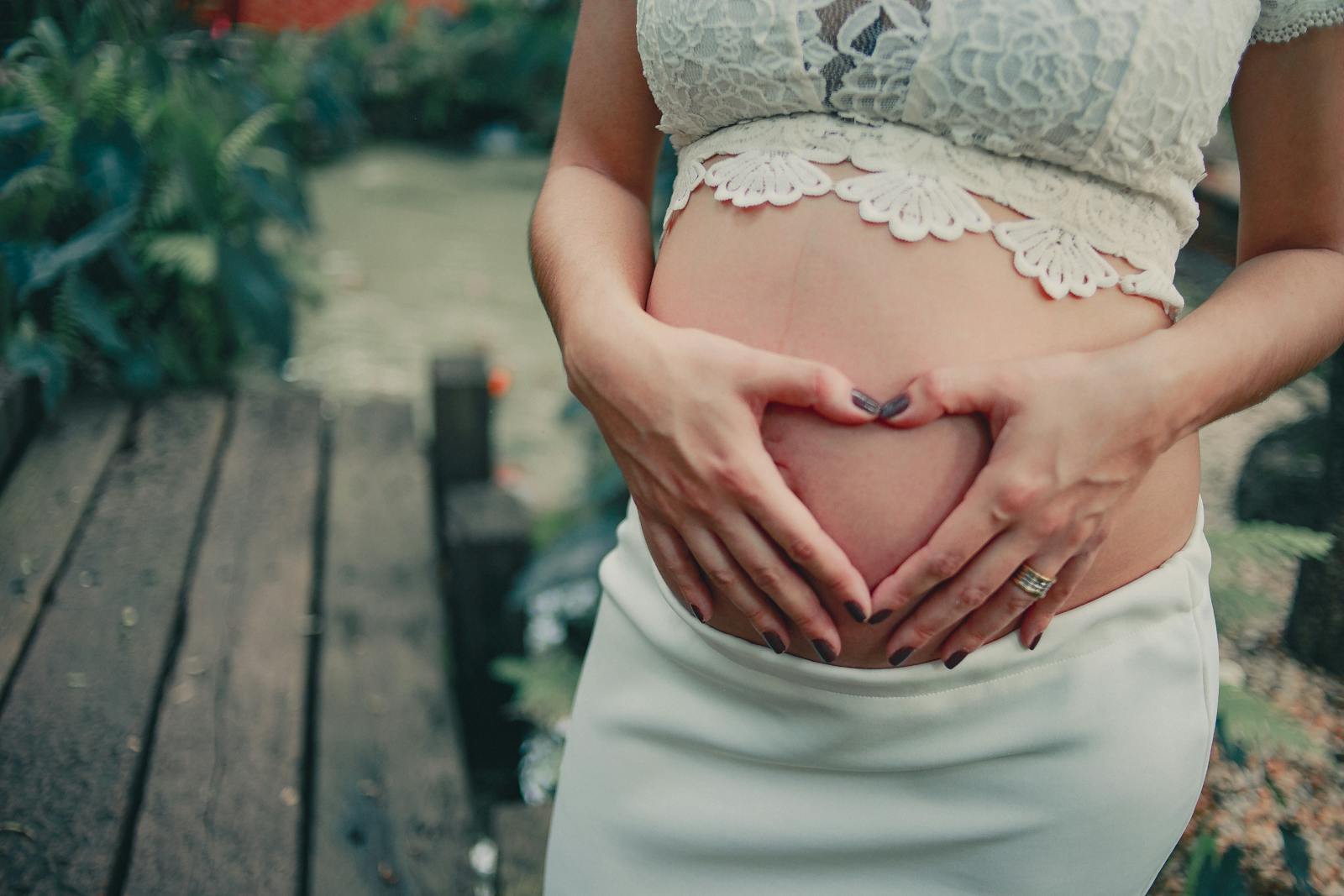The idea of babies crying in the womb might sound surprising, but research has shown that they can exhibit behaviors resembling crying before birth. While they don’t cry in the same way they do after birth—no sound, tears, or full expressions—fetuses begin to develop the physical and neurological systems needed for crying during the later stages of pregnancy. These “pre-crying” behaviors are part of the fetus’s natural development and preparation for life outside the womb. Let’s dive into what happens inside the womb, what triggers these crying-like behaviors, and how this development plays a role in the baby’s growth.
Crying-Like Behaviors in the Womb
Around 20-28 weeks into pregnancy, fetuses begin to develop reflexes and behaviors that prepare them for survival after birth. While they don’t produce audible cries, babies in the womb can demonstrate movements and reactions similar to crying. This is part of their early practice in responding to the outside world.
What Does “Crying” in the Womb Look Like?
Researchers have used ultrasound imaging and other monitoring tools to observe behaviors in fetuses that mimic crying. These include:
- Rhythmic Breathing Movements: Fetuses begin to exhibit rapid breathing-like movements, which is a precursor to crying.
- Opening Their Mouth: The fetus may open its mouth in a wide shape, similar to what a crying baby does outside the womb.
- Quivering Chin or Lower Lip: A quivering chin, similar to a newborn’s reaction during a cry, can be observed.
- Tongue Movement: The fetus might move its tongue in a way that looks like it is crying out.
- Increased Heart Rate: Similar to a crying response, the fetus’s heart rate may increase during these episodes.
These behaviors are not accompanied by sound, as the amniotic fluid surrounding the baby in the womb prevents air from entering the lungs, which is essential for making noise. However, the physical motions associated with crying are being practiced in the womb.
Developmental Timeline
Crying-like behaviors have been observed as early as the third trimester (around 28 weeks gestation). At this stage, the baby’s nervous system and lungs are developing, and the fetus is gaining more control over reflexive movements. The physical actions involved in crying are part of these developmental processes.
While fetuses in the womb don’t cry in response to emotions like hunger, discomfort, or stress the way newborns do, there are certain triggers that may cause these reflexive behaviors. Crying-like behaviors in the womb are more likely a response to external stimuli and are part of their development.
Possible Triggers for Pre-Crying Behaviors
- Loud Noises: Sudden, loud noises from outside the womb can startle the fetus and may trigger crying-like movements.
- Stress: If the mother experiences stress or physical discomfort, the fetus may react to changes in the environment or hormones.
- Vibration: External vibrations or changes in the mother’s body can sometimes elicit a reaction from the baby, leading to a response similar to crying.
- Sensory Input: By the third trimester, the fetus’s senses—particularly hearing—are becoming more developed. If the baby hears a loud or unfamiliar sound, it might trigger crying-like reflexes.
Practicing for Life Outside the Womb
One of the most important reasons babies exhibit these behaviors in the womb is to practice for their life after birth. Crying is a vital tool for newborns, helping them communicate their needs—whether they’re hungry, tired, or uncomfortable. The crying reflex also ensures that their lungs and breathing systems function properly once they enter the world.
Importance of Crying Practice
Practicing the physical aspects of crying in utero is just one part of the baby’s development. It’s the same reason babies practice sucking, swallowing, and breathing movements while still in the womb. These actions help them adapt to the world outside the womb, where they will need to eat, breathe, and communicate.
Is Crying in the Womb a Cause for Concern?
Seeing evidence of crying-like behaviors in the womb may seem worrying to some parents, but it is usually a sign of normal, healthy development. These behaviors are reflexive, and there is no indication that babies feel emotional distress in the same way outside-the-womb crying may suggest.
Monitoring Fetal Movements
However, it’s essential for parents to communicate any concerns about their pregnancy with their healthcare provider, especially if they experience increased stress or significant changes in the baby’s movement patterns. Regular prenatal check-ups can help ensure the baby’s development is on track and address any potential issues early.
What Happens After Birth?
Once the baby is born, the crying reflex becomes an essential form of communication. It is how newborns alert caregivers to their needs, such as hunger, tiredness, or discomfort. The process of crying also helps clear their lungs of amniotic fluid and initiate proper breathing after birth. The practice that babies have undergone in the womb to mimic crying is part of this transition from the quiet, fluid-filled environment of the womb to the noisy, air-filled world outside.
Transition to the Outside World
This transition is crucial, as it involves the infant adapting from a reliant state within the womb to a more independent functioning after birth. The crying reflex is one of the first signs of this adaptation, serving both physiological and communicative purposes.
Deeper Understanding Through Technology
Advancements in technology, particularly in ultrasound and fetal monitoring, have allowed researchers and healthcare providers to gain deeper insights into fetal development. These tools have confirmed that these pre-crying behaviors are indeed a part of normal development.
The Role of Ultrasound
Ultrasound technology, for instance, has become a window into the womb, allowing us to witness these fascinating behaviors firsthand and ensuring that the fetus is developing as expected. Parents can see their baby’s movements, providing a reassuring glimpse of their child’s growth and development.
Emotional and Psychological Impact on Parents
The notion of babies crying in the womb, albeit silently, can evoke a range of emotions among expectant parents. Understanding what these behaviors mean and why they occur can help alleviate concerns and foster a deeper connection with the unborn child.
Connecting with the Unborn Child
For many parents, seeing a baby move or exhibit behaviors like pre-crying on an ultrasound can be an emotional experience. It’s a reminder of the life growing within and the beginning of a lifelong bond. Engaging in practices such as talking or singing to the baby can further strengthen this connection, as the baby may respond to familiar voices and sounds.
Common Myths and Misconceptions
There are several myths surrounding fetal behavior, particularly concerning crying in the womb. Dispelling these misconceptions is important for expecting parents to have a realistic understanding of fetal development.
Myth: Babies Feel Emotional Distress in the Womb
A common misconception is that babies feel emotional distress while in the womb when they exhibit crying-like behaviors. In reality, these actions are reflexive and not indicative of emotional states. The fetus is primarily responding to physical stimuli and practicing essential reflexes for life after birth.
Practical Tips for Expectant Parents
Understanding fetal development can help parents feel more prepared and connected to their unborn child. Here are some practical tips to consider:
- Attend Regular Prenatal Appointments: Regular check-ups with your healthcare provider can ensure your baby is developing healthily and provide peace of mind.
- Engage with Your Baby: Talking, reading, or singing to your unborn baby can enhance bonding and potentially stimulate fetal development.
- Monitor Movements: Keep track of your baby’s movements during the later stages of pregnancy, as changes can indicate different developmental milestones or potential issues.
- Manage Stress: Maintaining a calm and positive environment can benefit both mother and baby, as maternal stress can influence fetal behavior.
Conclusion
While babies don’t cry in the womb in the way we think of crying after birth, they do exhibit crying-like behaviors as part of their development. These movements—such as mouth opening, rhythmic breathing, and facial expressions—are reflexive actions that help prepare the baby for life outside the womb. It’s a fascinating glimpse into the complexity of fetal development, showing that even before birth, babies are gearing up for the important task of crying to communicate their needs once they arrive in the world. Understanding these behaviors can reassure parents about their baby’s development and foster a deeper connection with the new life they are eagerly anticipating.




